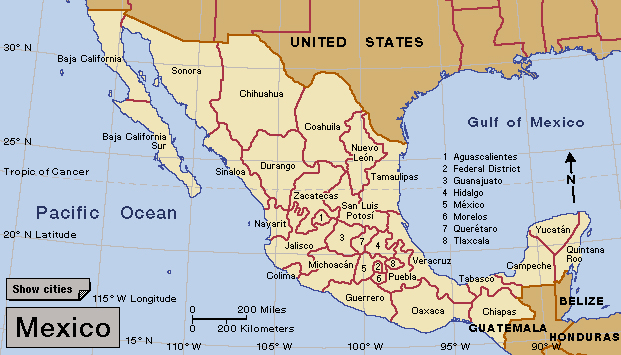Two days ago, on September 19, a powerful 7.1-magnitude earthquake struck central Mexico, collapsing buildings and killing more than 240 people in Mexico City, the capital, and in the states of Guerrero, México, Morelos, Oaxaca, and Puebla. The earthquake struck on the anniversary of a catastrophic 1985 earthquake that killed some 10,000 people in central Mexico. The quake followed another deadly temblor that hit southern Mexico earlier in September 2017.
The earthquake’s epicenter was near the small Puebla city of Atencingo, about 75 miles (120 kilometers) southeast of Mexico City. The prolonged tremor hit at 1:14 p.m. local time—just two hours after an annual earthquake drill in Mexico City—shaking buildings and frightening people into the streets. Structures collapsed in several cities, obscuring the panicked survivors in dust clouds amid the blaring din of alarm sirens.
Emergency responders rushed to the first scenes of destruction. Unstable rubble and electric power outages hampered rescue efforts, and widespread damage meant many ravaged places went hours without help. Military personnel and civilian volunteers aided emergency workers as they searched through the night for survivors. Sniffer dogs followed human scents, and workers pleaded for silence, hoping to hear the calls of people trapped beneath the destruction. Many people were saved, but the body count rose quickly as splintered wood, shattered masonry, and chunks of concrete were frantically removed. Many people remain missing amid the devastation, and the disaster’s death toll—245 as of this morning—will almost certainly rise.

In Mexico City, more than 90 people have died, including 21 children and 5 adults killed when an elementary school collapsed in the city’s southern Coapa district. More than 70 people were killed in Morelos, just south of Mexico City, and more than 40 died in the epicenter state of Puebla. On the slopes of Popocatépetl volcano southeast of Mexico City, a church collapsed in the village of Atzitzihuacán, killing 15 people. Throughout the region, scores of buildings fell, ruptured gas lines sparked fires, and falling debris crushed cars on the streets.
Like the earthquake earlier in September in southern Mexico, Tuesday’s temblor struck near the Middle America Trench, a zone in the eastern Pacific Ocean where one slab of Earth’s crust, the Cocos Plate, is sliding beneath the North American Plate—a geological process called subduction. The Middle America Trench is part of the so-called Ring of Fire, an area of high seismic and volcanic activity that encircles the Pacific Ocean. The United States Geological Survey (USGS) issued an orange alert (the second-highest threat level) after Tuesday afternoon’s quake, warning of significant casualties and extensive and widespread damage. The alert was part of the USGS PAGER (Prompt Assessment of Global Earthquakes for Response) system that informs emergency responders, the media, and government and aid agencies of the scope of a potential disaster.
On Sept. 19, 1985, an 8.0-magnitude temblor killed some 10,000 people in Mexico City and nearby areas. About 400 buildings in the capital were destroyed in that disaster, and thousands of others suffered damage. Since then, Mexico has enacted tougher building codes and safety standards—moves that no doubt saved many lives 32 years later.
Untitled Document
Can't view the linked articles? Subscribe to World Book Online

World Book Online delivers a progressive sequence of core databases supported by supplemental
tools, such as language translation, graphic organizers, and unique Webquests. Moving from
Early World of Learning to World Book Advanced, World Book Online aligns end-users with their
appropriate learning levels. Each stand-alone site provides additional features to support the
needs of users’ specific capabilities.
The World Book Difference
World Book combines cutting-edge technology with traditional editorial excellence to produce
authoritative, trustworthy, and unbiased content. The digital content is updated in real time and
carefully curated for each learning level. Accessible 24/7, the content is available on a variety of devices.
World Book Online combines 21st-century instructional techniques with timely information.
By breaking down complex topics and using easily understandable text, World Book Online helps to
build fluency and increase comprehension. Featuring single sign-on capability, these sites are paired
with highly visual content to engage even the most reluctant reader. Our collection of resources kindles
a lifelong learning experience for every user. This adherence to clarity, currency, and accuracy makes
World Book’s digital offerings an information hub for the classroom, library, and beyond.
Image 1: Rescue workers call for quiet as they search a collapsed building in the Mexico City neighborhood of La Condesa following a powerful 7.1-magnitude earthquake on Sept. 19, 2017. The earthquake toppled buildings and killed more than 240 people in the region. Credit: © Alejandro Cegarra, Bloomberg/Getty Images
Image 2: On Sept. 19, 2017, a powerful earthquake hit central Mexico, killing more than 240 people in the Federal District of Mexico City and in the states of Guerrero, México, Morelos, Oaxaca, and Puebla. Credit: WORLD BOOK map